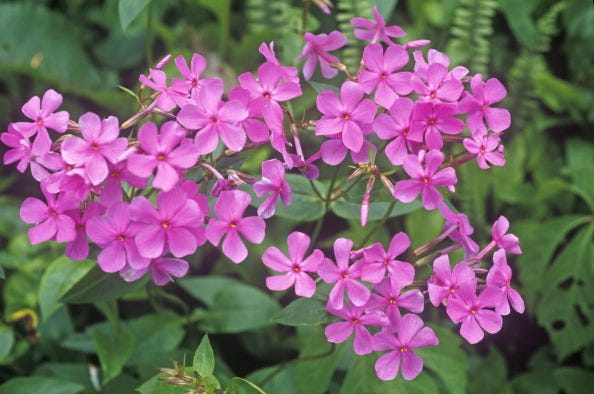Sowing Awe
It’s been a difficult few weeks where we see the violent cruelty human beings are capable of wreaking. This is on top of a very difficult year, where we have seen how nature can kill at a scale that is horrific, especially when abetted by the selfishness of human action.
I have written about these tragedies, and will continue to do. There are undoubtedly other horrors that await that will demand reckoning and mourning. But part of my purpose for creating this newsletter was to not only document the bad of life but to celebrate the good. Part of being “steady” is to seek out moments of beauty, to pause the treadmill of life, and often just step outside, of your routine and even your home.
Spring has sprung. And with that brings one of the most joyful sights on earth. It is wildflower season. From my beloved bluebonnets, the state flower of Texas, to whatever blooms in your neck of the woods (or highway median), this is a time of random splashes of color and a moment to revel in nature’s ability to sow awe.

Webster’s Dictionary defines a wildflower as “the flower of a wild or uncultivated plant or the plant bearing it.” And it is the wildness and uncultivated nature of these gems that, in my mind at least, is a big part of the allure. The notion of a “garden” is something that exists in cultures around the world. What that has often meant is an attempt to bend nature to the boundaries and limits of the human mind. It has meant carefully placing plants, shaping landscapes, and imposing a sense of “order.” Gardening, itself a verb, is defined by several other verbs to this effect: cultivating, breeding, planting, manicuring, excavating. Wildflowers can of course be planted in gardens, and this seems to be becoming a more popular endeavor. But even there, there is a sense that it is injecting an element that mimics the wilderness.
There is a saying that pops up when looking into the subject: “One person’s wildflower is another person’s weed.” And this gets to the heart of the matter. It shows that when viewing the natural world, perspective matters. Wildflowers can sprout up without warning. They are a reminder that disorder is the ultimate direction of nature. They crack through our pavements and vain human attempts to perch ourselves above the rest of life on Earth. Their beauty taunts our own fallibility.
There are thousands of wildflower species in the United States alone. Many of the ones we see have come from somewhere else —not unlike most of us who now call this land home. For wildflowers are travelers in their own right. Many have spread across the seas as stowaways, on ships’ ballasts, in pants pockets, stuck into the crevices of a global web of human and cargo transport. They are intrepid immigrants seeking a hospitable home to set down roots. Like all of life, they grow, flower, and disappear into memory.
One of the great heroes of wildflowers, in Texas and beyond, was Ladybird Johnson, the wife of President Lyndon Johnson. She had grown up a shy girl in East Texas, who had lost her mother when she was only five years old. She found solace in nature, like many who have sought a salve for trauma and heartbreak. And this gave her a lifelong love of all things wild, including flowers. Later in life, she became a tireless champion for wildflowers. Alongside actress Helen Hayes, Johnson established a center to promote native plants and wildflowers. (That center still bears her name today.) She was particularly determined to bring plant life to the sides of highways, injecting the splashes of color and beauty of nature into landscapes cut through with pavement.
One underrated quality of wildflowers is their persistence. Wildflowers bloom in landscapes that have burned. They can once again dot farms that have gone fallow or peak out from old factories that are crumbling. They are, like the season of spring, a sign of rebirth, of the resilience of nature, and of the ability of beauty to be concentrated in a few colorful petals. They are striking when viewed atop a single stem and they paint entire vistas with swaths of undulating color. They are precarious, easily plucked, and yet in their aggregate they provide a sense of seasonal stability. They inspire painters and poets, brighten the lives of children and the elderly, and beckon country folk and strollers through a city park.
I have shared below a photographic montage of wildflowers, but my hope is that you can fill the comments with your own pictures, reflections, and favorites.
For as long as I have God’s grace to open my eyes and take in a spring day, wildflowers will bring peace, and joy, and a smile, and a sense of calm. Steady.
—Dan


Please consider subscribing to STEADY, if you have not already. Our goal is to build a vibrant digital community —the more voices, perspectives, and viewpoints that can add to the conversation, the merrier.










Most dig dandelions from their lawn. We don’t. We enjoy the color and wait until the pretty , white seed heads form then pick them, blow on them and watch the seeds float away. Been doing that since we were little kids. Still do it 78 years later.
Please, bees that are waking up need the "weeds" please don't use pesticides or pull up dandelions until other food sources are available. We need them.